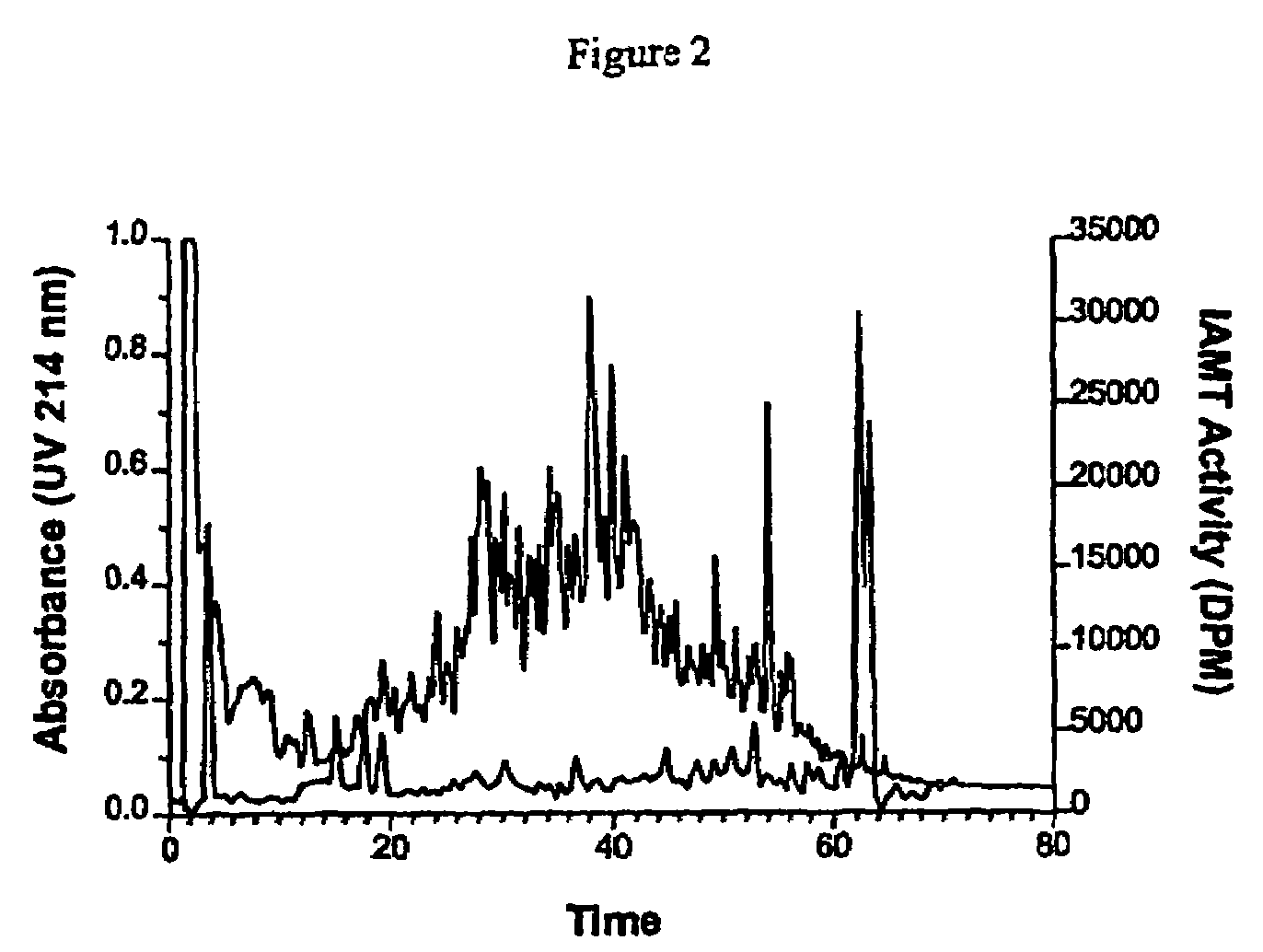Assay of isomerised and/or optically inverted proteins and protein fragments
a technology of protein fragments and isomerisation, which is applied in the direction of material analysis, material testing goods, instruments, etc., can solve the problems of difficult identification and development of biochemical markers, damage to cartilage proper functioning, and generation of aggrecan fragments, etc., to achieve optimal conformation, accelerate reaction speed, and sufficient flexibility
- Summary
- Abstract
- Description
- Claims
- Application Information
AI Technical Summary
Benefits of technology
Problems solved by technology
Method used
Image
Examples
example 2
Development of Antibodies Specific for Isomerised and / or Optically Inverted Proteins or Protein Fragments and Generation of Immunoassays Specific for Isomerised and / or Optically Inverted Proteins or Protein Fragments
[0120]Immunogen for generation of a specific antiserum can be generated by two procedures. The authentic protein or fragments of the protein from an extra-cellular tissue can be purified by conventional chromatographic procedures as outlined in example 1. The isomerisation degree of the purified protein or protein fragments can be determined by use of the IAMT assay, and thus proteins or protein fragments containing a high isomerisation degree (i.e. more than 0.5 mol isoAsp / mol protein or protein fragment) can be used for the immunizations. Alternatively synthetic peptides representing the isomerisation sites identified in a given extra-cellular matrix protein can be synthesized by conventional peptide synthesis methods (please refer to ‘Stewart, J. Young, J., “Solid pha...
example 3
Generation of Antibodies Specific for an Isomerised Fragment of Cartilage Oligomeric Matrix Protein (β-COMP) and Development of a β-COMP Specific Immunoassay
Peptide Conjugation
[0126]A synthetic peptide derived from human cartilage oligomeric matrix protein (COMP) containing an isomerised Asp residue within the sequence AQEDβSDH(‘β-COMP’) SEQ ID NO: 21 was used for immunisation of mice and generation of a specific antiserum as described in the following. The β-COMP peptide was conjugated to a carrier protein by the use of the covalent cross-linking agent 1-ethyl-3-[3-dimethylaminopropyl]carbodi-imide hydrocloride (CDI) (Pierce, Rockford, Ill, USA). The β-COMP conjugate was prepared essentially according to: Greg T. Hermanson, ‘Bioconjugate techniques’ 1996, Academic press, San Diego, USA. Briefly described the CDI conjugates were prepared as follows: One-hundred mg of thyroglobulin was dissolved to a concentration of 10 mg / ml in 0.05 M MES, 0.5 M NaCl, pH 6.0 in a total volume of 10 ...
PUM
 Login to View More
Login to View More Abstract
Description
Claims
Application Information
 Login to View More
Login to View More - R&D
- Intellectual Property
- Life Sciences
- Materials
- Tech Scout
- Unparalleled Data Quality
- Higher Quality Content
- 60% Fewer Hallucinations
Browse by: Latest US Patents, China's latest patents, Technical Efficacy Thesaurus, Application Domain, Technology Topic, Popular Technical Reports.
© 2025 PatSnap. All rights reserved.Legal|Privacy policy|Modern Slavery Act Transparency Statement|Sitemap|About US| Contact US: help@patsnap.com



